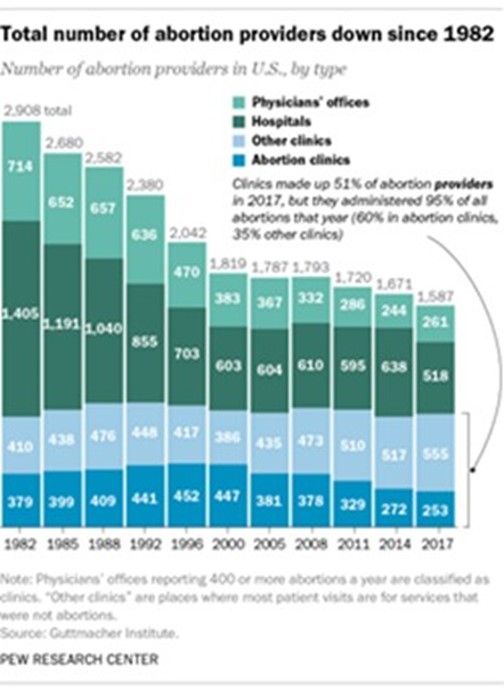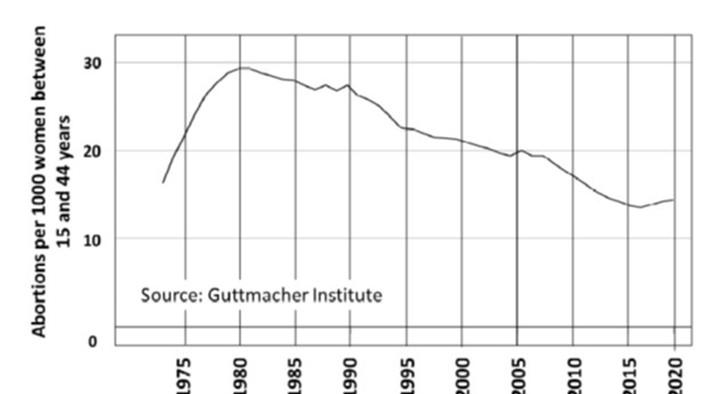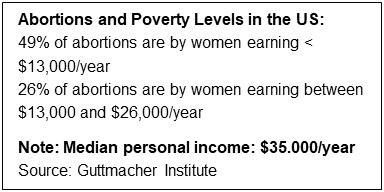Finally, on June 24, 2022, the Supreme Court overturned Roe v. Wade by a vote of 6-3. The 1973 Roe v. Wade ruling was given, interpreting that the “Due Process Clause” of the Fourteenth Amendment to the Constitution gives a fundamental “right to privacy” protecting a woman’s right to opt for terminating her pregnancy (aka abortion). The overturning of the 1973 decision was expected for weeks — social media was abuzz that it would be struck down, and the death watch was already in place.
This latest overturning of the 1973 ruling will cause a tectonic shift in all these rights and even beyond. The 1973 Roe v. Wade decision went beyond abortion: it included the right to contraception as well. Many states in the South, where social and religious conservatives run the government machinery, had already started imposing restrictions on abortion.
Striking down Roe v. Wade has always been in the campaign promises of many Republican presidential and congressional candidates in elections. But it gained momentum during the Reagan presidential campaign in 1980. It was ironic that the B-grade Hollywood actor, Ronald Reagan, in the 1980s, made this a campaign promise when running against Jimmy Carter, an Evangelical Christian, to woo the religious conservatives led by the Rev. Jerry Falwell. And Reagan struck gold!!
Ever since, every Republican presidential candidate has promised to appoint judges to the Supreme Court to strike down Roe v. Wade to appeal to social/religious conservative voters. Of course, the maverick Republican Donald Trump appointing three justices to the Supreme Court made this easy. Nobody will miss the irony that the thrice-married Trump, a playboy with a promiscuous, unrestrained, philandering — you pick the adjective — lifestyle throughout his adult life, made this happen! Predictably Trump took credit for the decision, keeping the 2024 presidential elections in mind: “Today’s decision, which is the biggest win for life in a generation … was made possible because I delivered everything as promised.”
Americans have always been divided on the issue of abortion. Those opposed to women’s need to have the options on reproductive matters prophesied that rates of abortion will rise and promiscuity among teenagers would lead to more pregnancies. Much to their chagrin, this did not happen (see the graphs). On the contrary, better sex education and dissemination of correct information resulted in fewer teenage pregnancies.
Similarly, as working women focused on their careers, the birth rate too declined. The blame for this is the abysmal state of paid maternity/paternity benefits and the prohibitive cost of childcare for working class families.
Some states rushed to ban abortions altogether (the count is now seventeen) and many more will join them in the coming months. Now, in many of these states, abortions will be accessible only to those women with money to travel to states where abortion is still available, who have the resources to pay for the service and stay in hotels, costs that may run into a few thousand dollars. But abortion numbers are closely tied to the poverty level of women. See the table below:
Low-income rural and urban women of all ethnicities in the American context, who cannot afford to pay for the abortion, are the biggest victims of the US Supreme Court decision. These women, already burdened with low wages and higher unemployment with less access to medical facilities, will be victimized for this over-reach of the Supreme Court.
In the post-feminist era, a new generation of women took the victories of the feminist movement for granted. With better access to education and better paying jobs, many felt complacent about the freedoms they enjoyed. They will have to start the struggle all over again to gain control of their reproductive rights. Now, there will be a new respect for the earlier feminists who fought and won concessions to gain control of their reproductive rights — from sex education/contraception to abortion.
So, where are we headed from here? For starters, restrictions to abortion in many states are likely to increase the serious complications for women and infants during childbirth. Further, where abortion is not legally available, outcomes for medically high-risk births will result in dangerous situations, mostly for low-income, less educated women. This should be of grave concern for public health administrators, irrespective of their ideology on women’s reproductive rights.
Fixing this problem requires a long-term outlook. Electing more women who are pro-choice — not just in Congress, but also in state and local government — is necessary to bring women’s issues into public focus. Not just reproductive rights, but paid maternity/paternity leave, and helping families with childcare costs.
What should young parents do now? It is important now more than ever that parents with young children take on the important duty of educating their daughters and sons as well — and particularly sons, one might say — on their personal responsibilities in their interactions with their peers of the opposite gender. Discussing openly and freely in the home in one-on-one discussions and in schools is imperative for saving our children from the horrible consequences of pregnancies when they are themselves children.
This regressive decision by six judges of the Supreme Court, prompted solely by their partisan politics and conservative ideology, is deplorable to say the least. Deplorable because this decision
a) reverts an already settled issue,
b) is intrusive in our cherished right to privacy,
c) completely ignores the widely available socioeconomic statistics of unwanted pregnancies that are cruel to the working class and poor disadvanged women of all races and color, and
d) overlooks the advances in medicine in detecting serious fetal defects resulting in a huge burden on all women, families, the healthcare system, and taxpayers when women are forced to carry to terms their high-risk pregnancies. ∎




